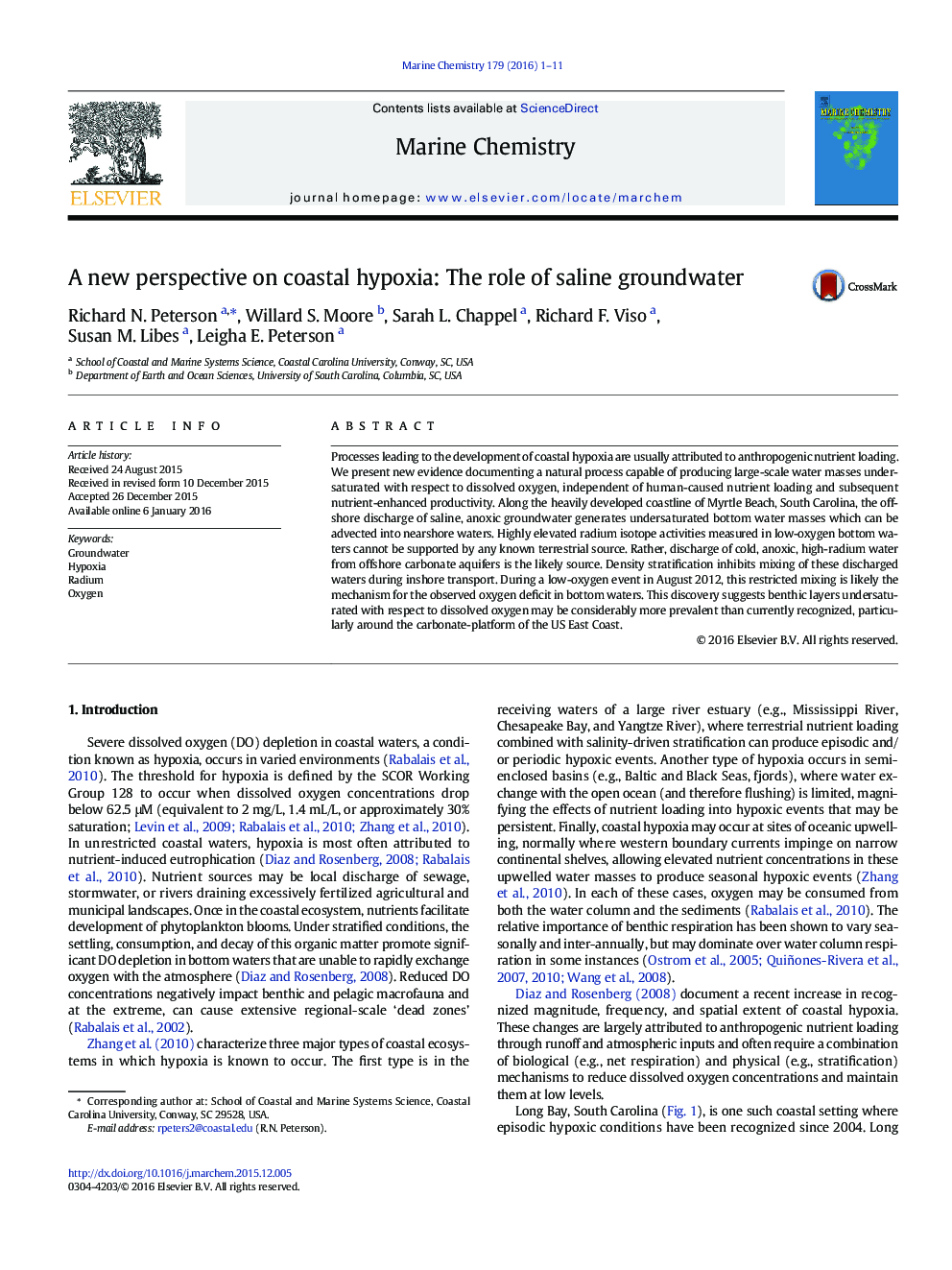| Article ID | Journal | Published Year | Pages | File Type |
|---|---|---|---|---|
| 1261148 | Marine Chemistry | 2016 | 11 Pages |
•Periodic hypoxia is observed in Long Bay bottom waters off South Carolina.•Radium isotopes indicate that this hypoxia is caused by offshore groundwater discharge.•Anoxic groundwater inputs largely account for oxygen deficit in bottom waters.
Processes leading to the development of coastal hypoxia are usually attributed to anthropogenic nutrient loading. We present new evidence documenting a natural process capable of producing large-scale water masses undersaturated with respect to dissolved oxygen, independent of human-caused nutrient loading and subsequent nutrient-enhanced productivity. Along the heavily developed coastline of Myrtle Beach, South Carolina, the offshore discharge of saline, anoxic groundwater generates undersaturated bottom water masses which can be advected into nearshore waters. Highly elevated radium isotope activities measured in low-oxygen bottom waters cannot be supported by any known terrestrial source. Rather, discharge of cold, anoxic, high-radium water from offshore carbonate aquifers is the likely source. Density stratification inhibits mixing of these discharged waters during inshore transport. During a low-oxygen event in August 2012, this restricted mixing is likely the mechanism for the observed oxygen deficit in bottom waters. This discovery suggests benthic layers undersaturated with respect to dissolved oxygen may be considerably more prevalent than currently recognized, particularly around the carbonate-platform of the US East Coast.
